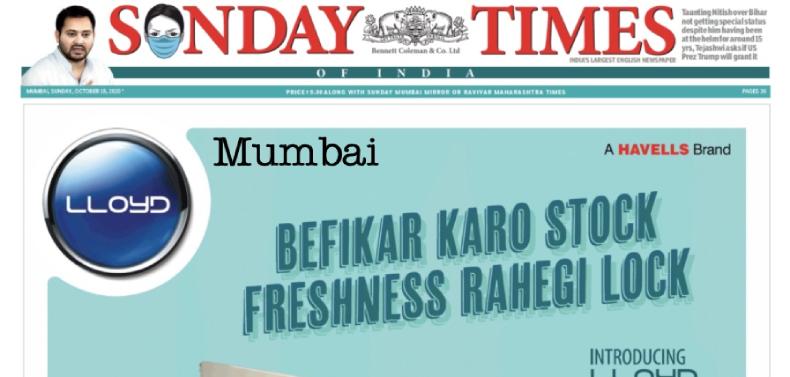
Go directly to: 6 simple, common-sense based rules for pan-Indian, multi-edition advertising.
An interesting mishmash attempt at using regional languages by Havells’ Lloyd, yesterday, in The Times of India. First off, I’m very glad that they even bothered to localize some of the editions – they could have simply gone ahead with a one-size-fits-all Hinglish headline for all editions, but did not.
But, when I look at it from a larger view, across multiple editions, I notice the mishmash approach.
1. The Delhi, Mumbai and a few other ‘North’ editions have a Hinglish headline written in English text – this is presumably the caption the ad agency concocted, given it rhymes lock and stock (and barrel).


2. But in the South, Bengaluru and Hyderabad too have the same Hinglish headline. This despite Hyderabad having its own local brand face – Mahesh Babu – instead of Ranveer-Deepika. Doesn’t this look like Mahesh Babu, a Telugu superstar, is speaking to people in AP/Telangana in Hinglish, instead of Teluglish that seems more natural?


3. Tamil Nadu and Kerala have headlines written in Tamil and Malayalam – big surprise! Even more surprising – the headlines are not written in English text, but Tamil and Malayalam script! What’s not surprising is that they don’t rhyme as well as the Hinglish headline. The Mumbai-based agency that was paid the most as the official agency outsourced the translation to a ‘local’ agency that was paid much lesser to offer a functional translation, perhaps.


4. Kerala too has a local face – Mohanlal. And Mohanlal speaking in Malayalanglish seems apt.
5. The interesting exception is Kolkata. It has the national faces speaking in Banglish!

For comparison, take a look at what Fortune Oil did recently:
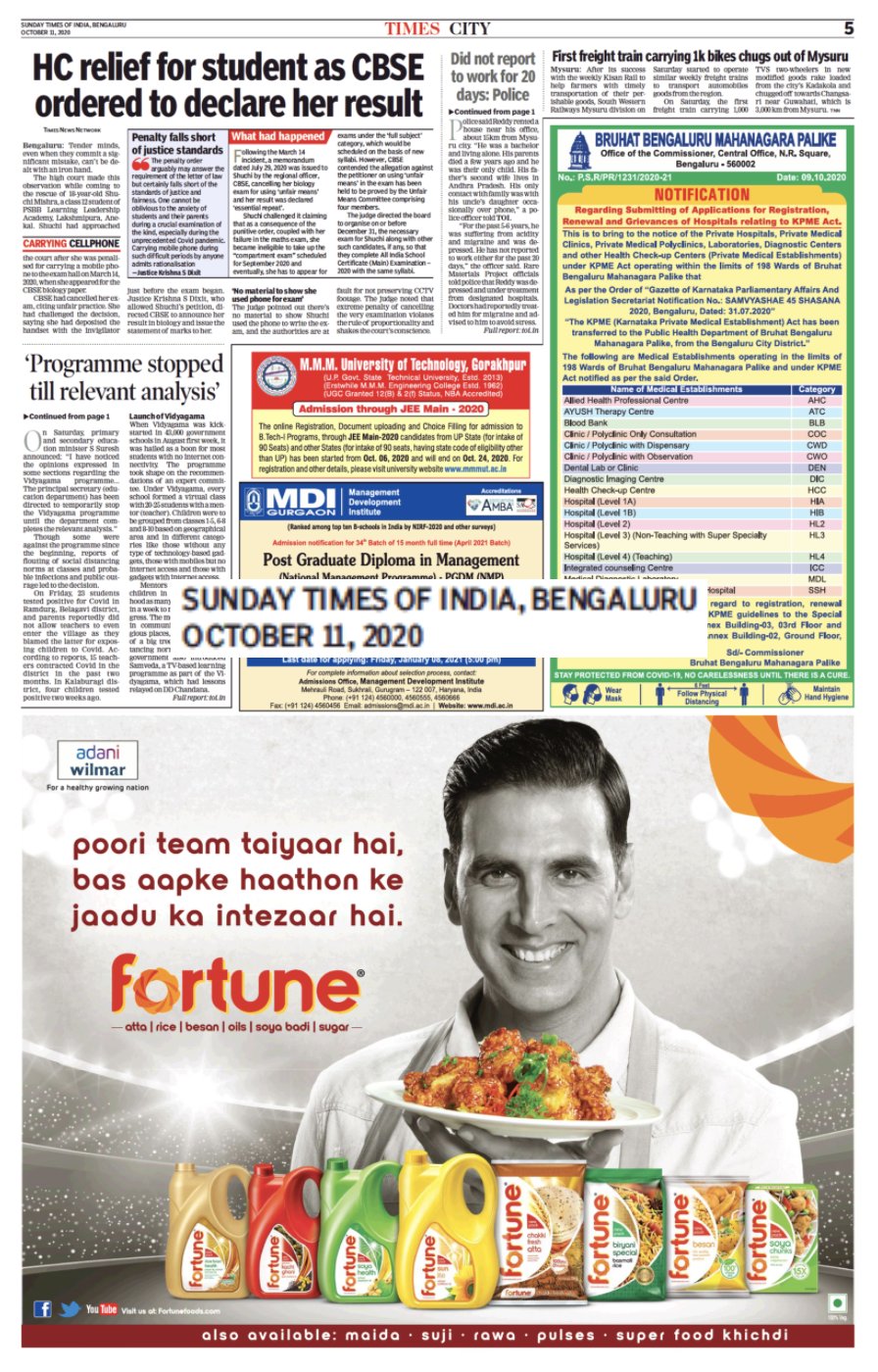
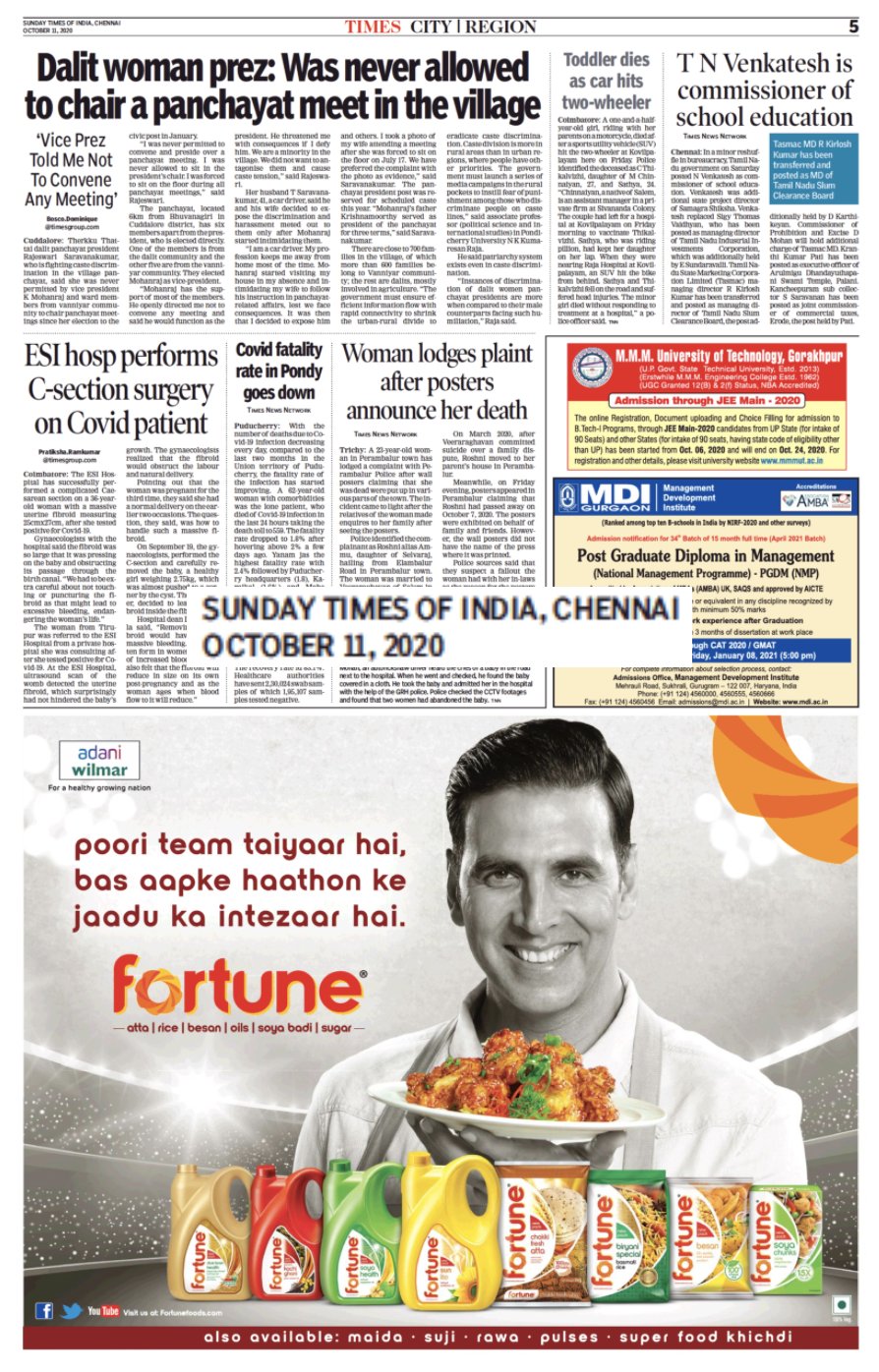
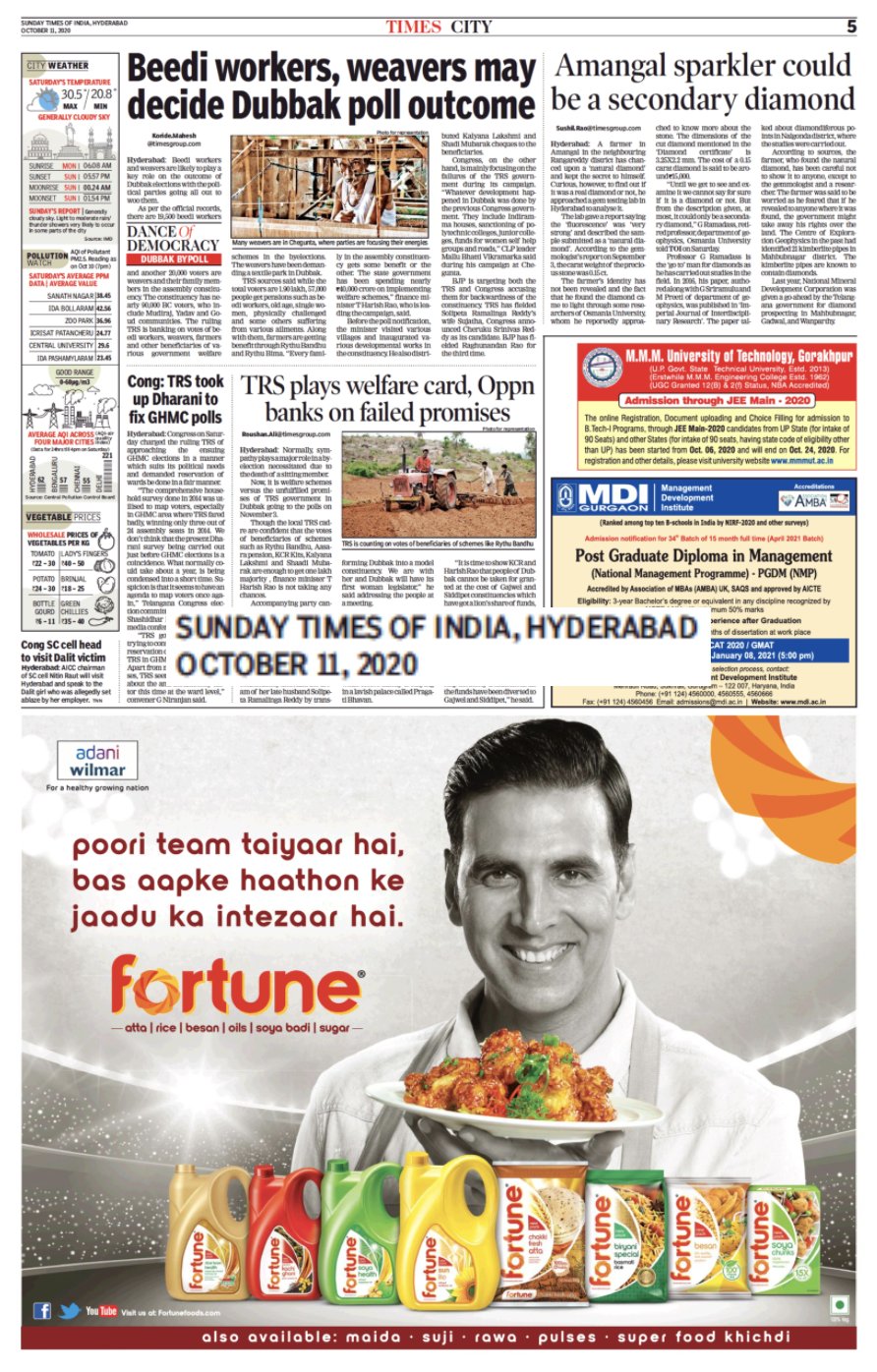
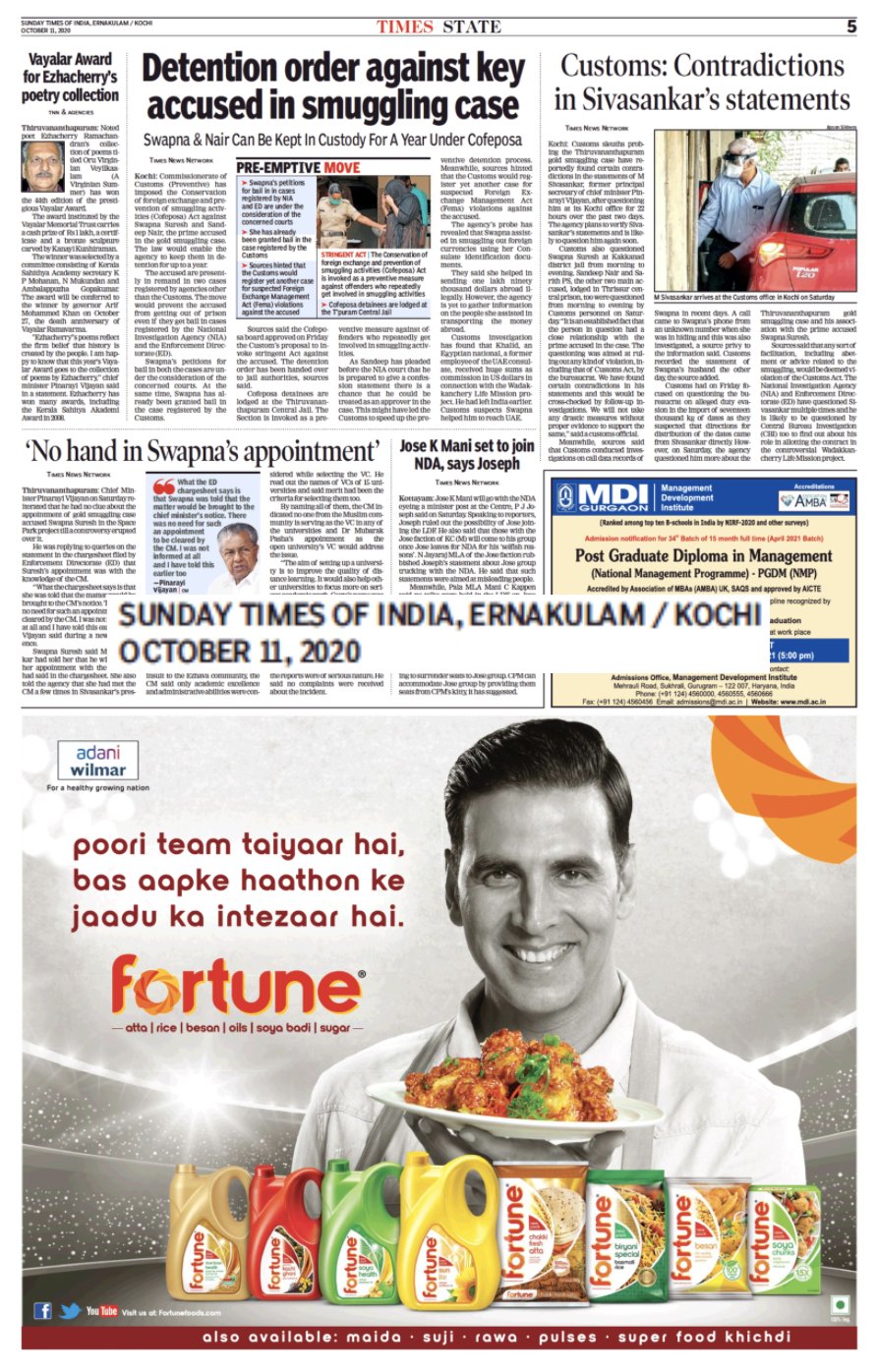
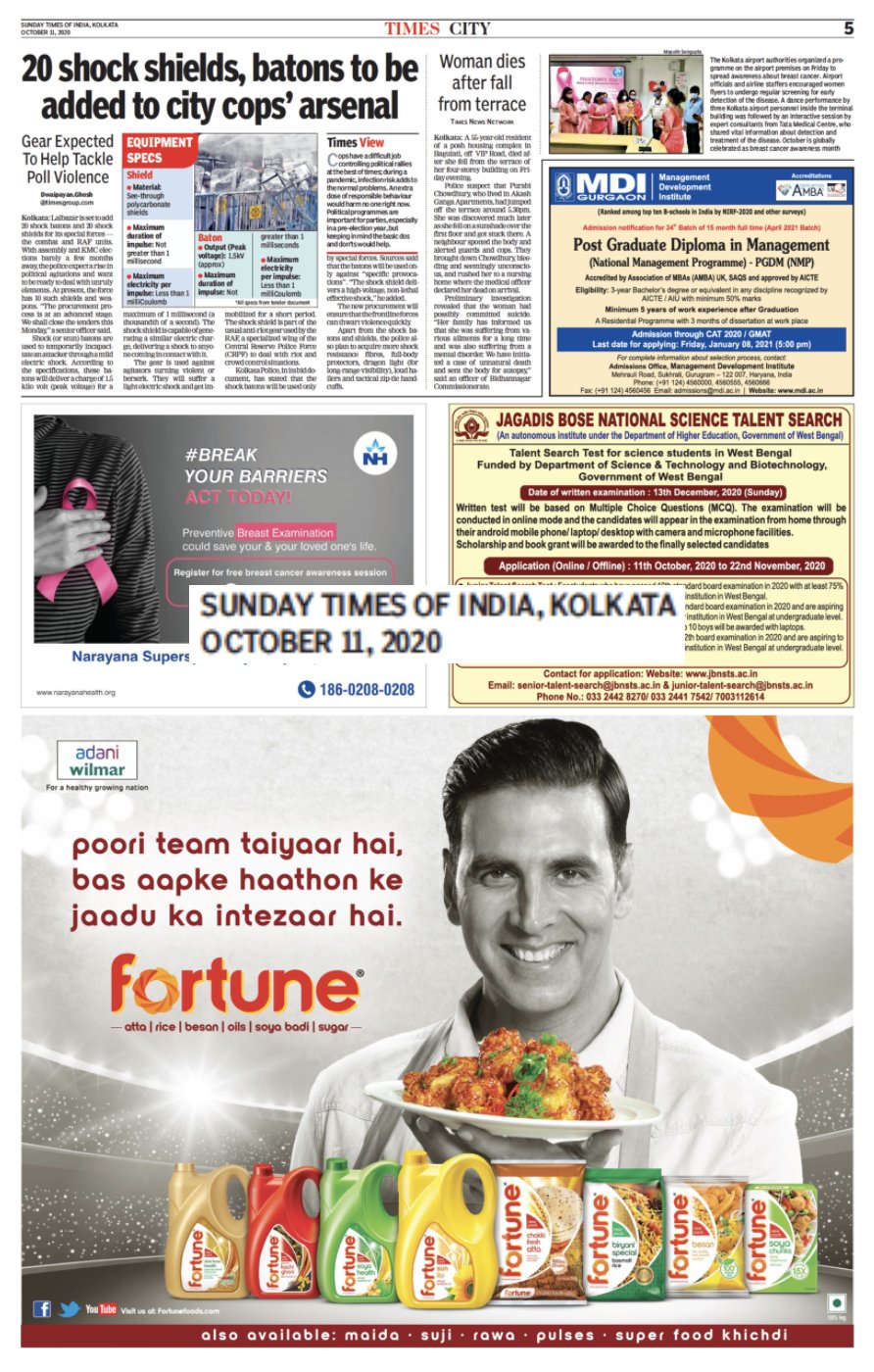
One Hinglish caption all across India, with zero thought.
Consider this Mother Dairy ad. for another context:
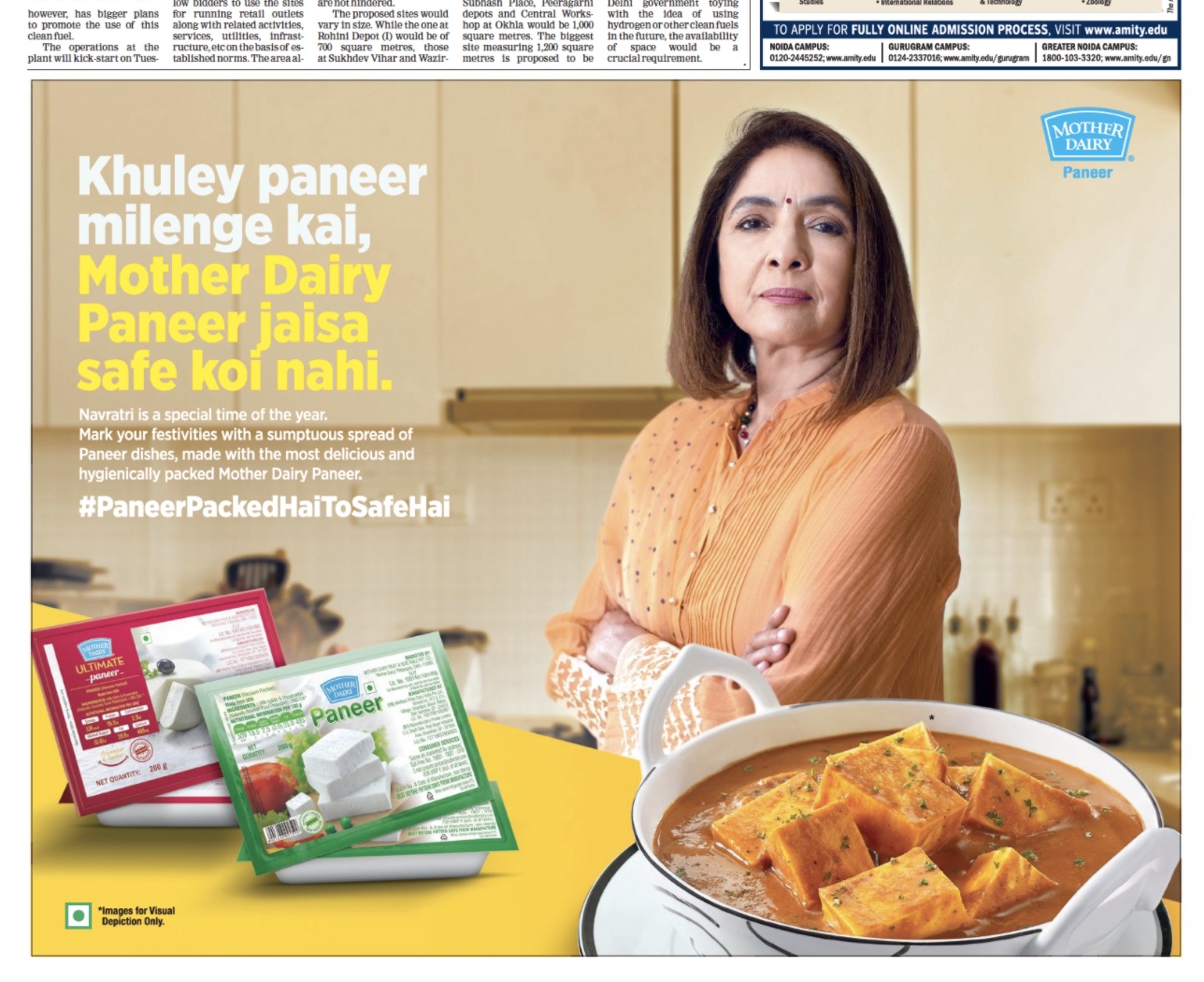
Which city is this from? The Times of India’s Delhi edition (today – October 19, 2020). In Delhi, this Hindi headline, written using English text makes perfect sense and appeals to people in a way they speak every day. It uses the Hindi headline to draw people’s attention and then switches to English for the body copy. Release the same ad as-is in a Chennai edition or Hyderabad edition… and that looks jarring.
ITC too released a contextually and linguistically thoughtful ad in The Times of India’s Kolkata edition recently – it draws the attention of the locals using a Bangla headline written in English and then switches to English to add context in the body copy.
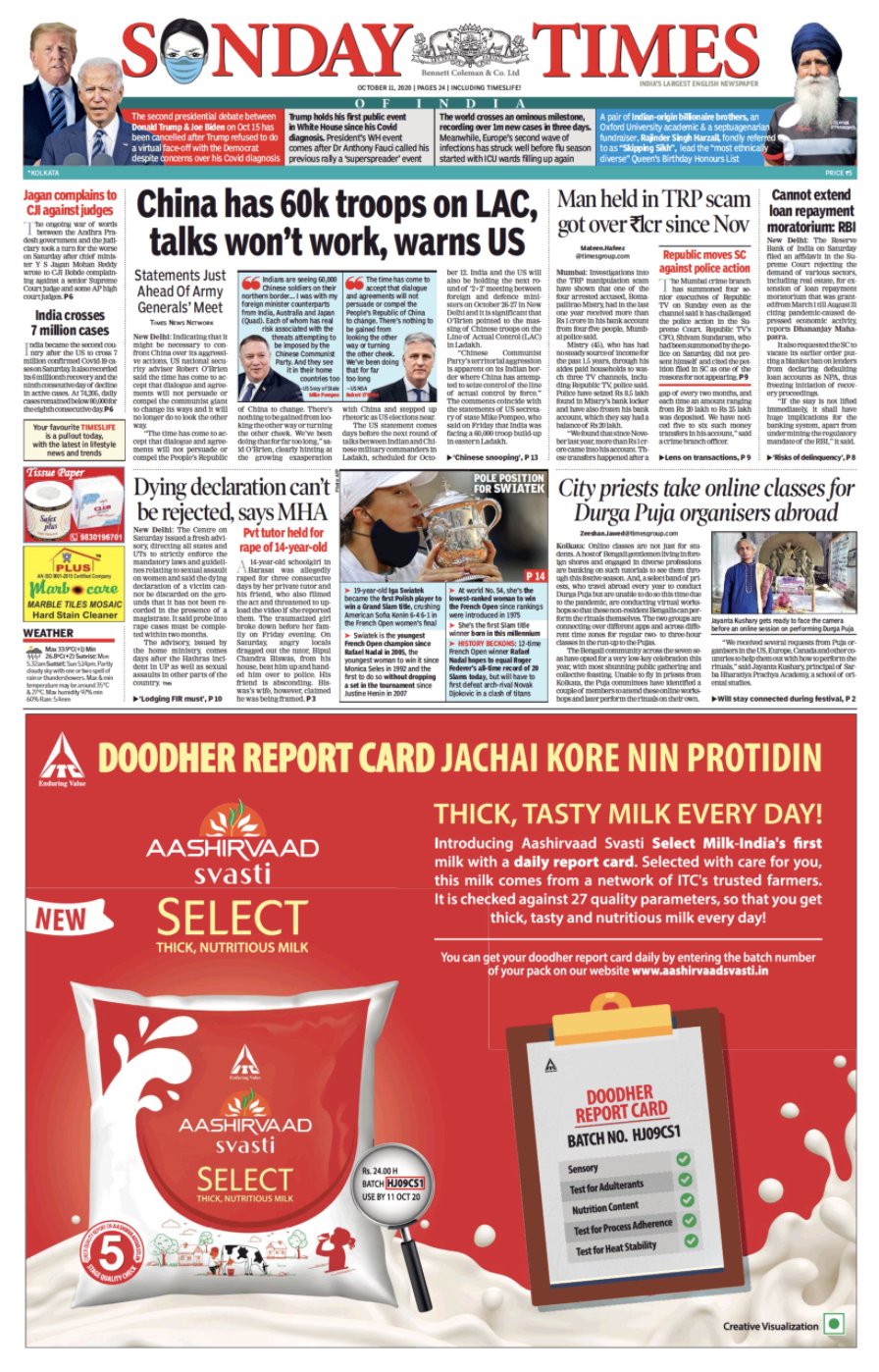
When a brand with a national presence is attempting a pan-Indian, multi-edition advertisement on the same day, here are some simple, common-sense based thumb-rules:
1. Most importantly, Hindi/Hinglish headlines or captions, created by a Mumbai-based or a Delhi-based ad agency are primarily meant for states that have Hindi as their main language of everyday conversation. Hindi is not India’s national language. There are states in India that have people knowing Hindi merely on a need-to-know/functional basis, and value their state’s local language more.
Why is this important? Because advertising is not merely the art of getting a point across – it is less about comprehension and more about persuasion. When you are trying to persuade someone to do something (call-to-action, in advertising), it is better to appeal to them in a language that they are more likely to talk on an everyday basis. That is the language of the heart and not merely the language to communicate. This is just like a Tamilian appreciating local food over food from other states – a language, like food and culture, is locally important and relevant in persuasion.
2. If it is a campaign in an English-language newspaper, the default, the safest and simplest idea would be to stick to English.
3. While English communicates and gets the message across, if the brand wants to appeal more innately to a particular state’s predominant population, they can use a smattering of the local language. This applies also when you are addressing states that do not have Hindi as their primary language of the common people, and who value the mother-tongue/regional language of the state.
But this needs to be handed over to a translation/ad agency that knows the local language well enough and is given the freedom to go beyond translation or transliteration. The agency should be given the freedom to redo the headline or caption by asking them to stick to the meaning (or intended outcome in terms of meaning), but use local nuances to get it the best possible way that leads to the “Hey, this brand is talking like we do!” appeal.
There are many, many tremendously talented translators working in the Television/Cinema/OTT industries in India – every bit of locally contextual subtitles you see on any channel is extremely good work. The advertising industry needs to start looking towards better translators.
4. If this regional language variant is being used in an English language newspaper, it is better to use English script to write it, instead of the regional language script. Why? Because:
(a) this is an English newspaper and
(b) many local people have not used the regional language script in a long time due to lesser opportunities, but have continued to speak it (which does not need script-level knowledge) and live in it with a bridge of using English to write it (because of most digital keyboards forcing us to, earlier, via smartphones).
5. If the regional language variant is being used in a regional language newspaper, it is better to use regional language script to write it for the simple reason that it fits the newspaper’s primary language.
6. While there is no need to sign up local faces for each state (they can, if they have more money) and a national face is a decent-enough clutter breaker, if they do sign up local faces, think of how it may sound if that local face is made to speak in a language that is not the state’s regional language.
Here is a simple example of this being done right at least across 2 states (Karnataka and Tamil Nadu), by Zomato. Notice the use of English script to write Kannadanglish and Tanglish, and the use of locally relevant and liked phrases and keywords.




